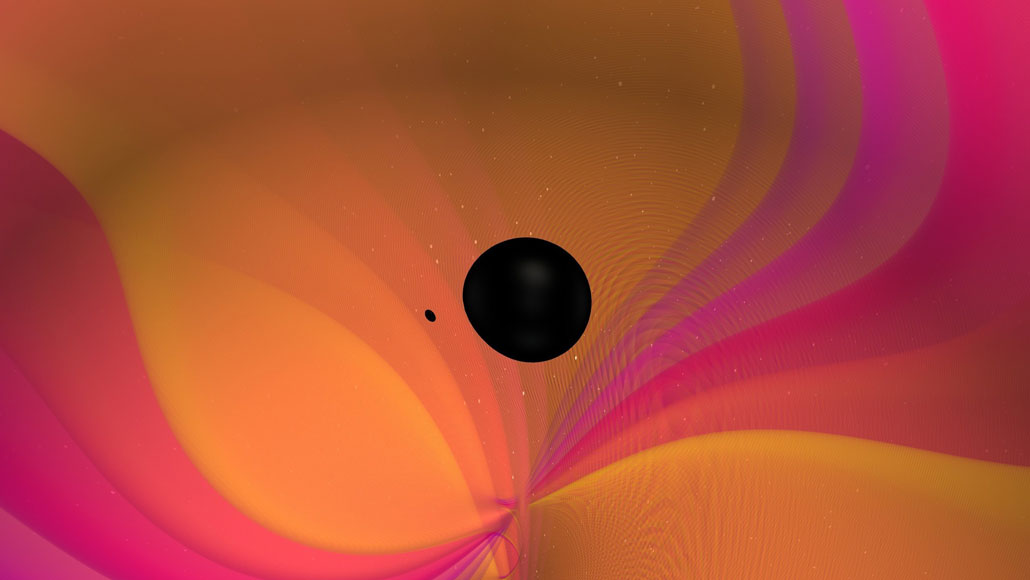
Scientists have now detected 50 sets of gravitational waves, many produced when two black holes (illustrated) spiral around one another before colliding and merging into one.
© N. Fischer, S. Ossokine, H. Pfeiffer, A. Buonanno/Max Planck Institute for Gravitational Physics, Simulating eXtreme Spacetimes (SXS) Collaboration







